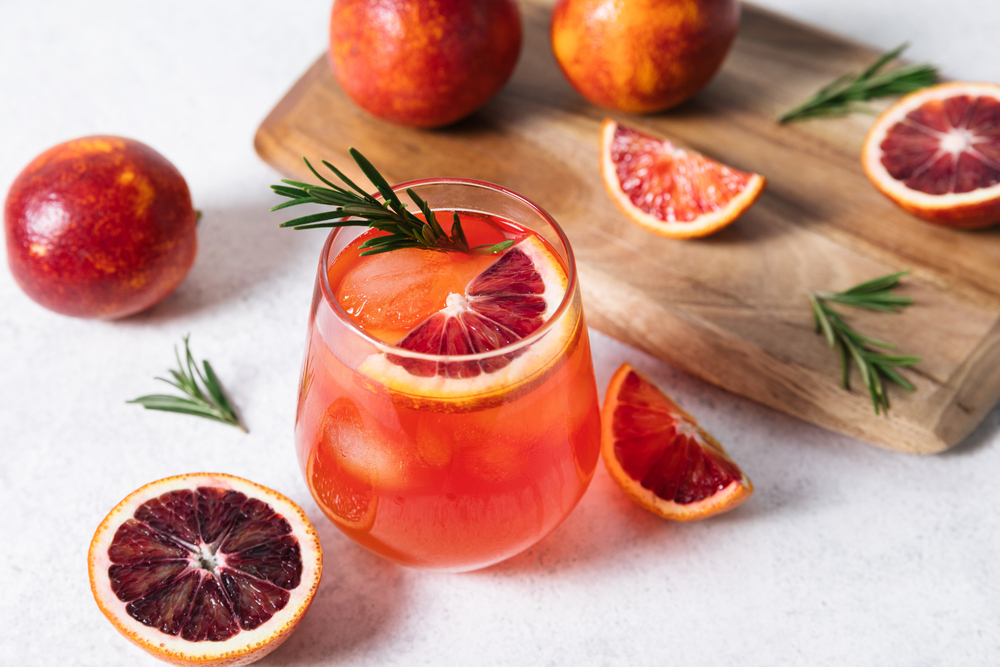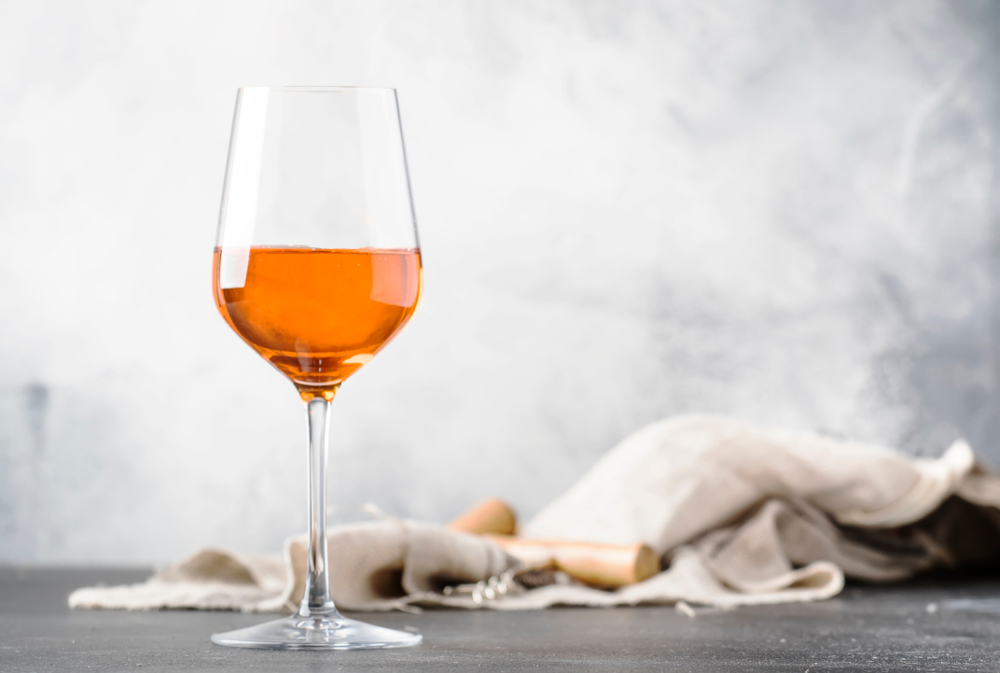Everything You Want to Know About Orange Wine
Do you have an introduction with orange wine? What is orange wine? Are orange wines made of orange? Is orange wine is like orange juice or what are the food options we can have with it?
In the vast world of wines, where reds, whites, and rosés reign supreme, a fascinating and distinct category has been rising in recent years – orange wine. This enigmatic elixir has been captivating wine enthusiasts and novices alike with its distinctive color, flavors, and production process. Let’s find the answers together in this blog post. The Premium Selection will explore everything you need to know about orange wine, from its origins to its taste profile and pairing with food.
A Comprehensive Guide to Orange Wine:
Unveiling the Allure of Amber Elixirs!
Orange wine, dating back thousands of years, is an ancient style of winemaking originating from the Caucasus region. Grapes are fermented with their skins, creating an amber hue and distinct flavors. Traced to Georgian and Armenian traditions, the method spread across Europe. However, its popularity waned as modern winemaking favored clearer wines.
A resurgence in the late 20th century led to global interest, with new techniques blending old-world practices with contemporary tastes. Today, orange wine holds a niche but growing position in the wine world. Celebrated for its unique color, texture, and complex profiles than red and white wines.
What is Orange Wine?

Orange wine, refers as “skin-contact” or “amber” wine, is a style of wine that is made from white grape varieties, but unlike traditional white wines, it undergoes a unique winemaking process that involves extended contact between the grape skins and the juice during fermentation. This extended skin contact imbues the wine with its characteristic orange to amber hues and a complex flavor profile that sets it apart from other wines.
Taste Profile of Orange Wine
The taste of orange wine can be quite diverse, influenced by factors such as grape variety, winemaking techniques, and the length of skin contact. However, orange wines tend to exhibit flavors and textures that combine the freshness of white wines with the tannic structure and complexity often associated with red wines.
The allure of orange wine extends beyond its color, encompassing a rich and diverse flavor profile. The taste of these wines influence by factors such as grape variety, fermentation techniques, and aging processes. Notes of dry fruits, honey, nuts, and tea are often intertwine with subtle oxidative nuances reminiscent of sherry. Akin to red wines, orange wines possess tannins that contribute to their complexity, granting them a textured and intriguing palate.
You might encounter notes of dried fruits, honey, nuts, tea, and sometimes a hint of oxidative character akin to sherry. The resulting wines can be rich and textured, often displaying a subtle grip on the palate, making them a captivating departure from traditional white wines.
Immerse yourself in the allure of Orange, New South Wales, as wine enthusiasts embark on unforgettable wine tours through the captivating landscapes of this renowned region. Beyond the vineyards, Orange’s charming wine bars offer the perfect setting to savor wines from Orange NSW, showcasing the best orange wines the region has to offer.
The best orange wine selection is a testament to the dedication and artistry of local winemakers, and the Orange Wine Festival stands as a testament to the growing prominence of orange wines within Australia’s viticulture scene. With each glass, one can taste the commitment to excellence that defines the best orange wines, making this year’s Orange Food and Wine Festival an unmissable celebration of the region’s vinicultural prowess.
Orange Wine vs. Natural Wine
Is orange wine synonymous with natural wine? While the two concepts share a focus on minimal intervention, they are distinct. Orange wine pertains specifically to the method of production involving extended skin contact. Whereas, natural wine encapsulates wines created with minimal interference in both vineyard and cellar. The distinction lies in their production process, with orange wine boasting its characteristic color as a testament to its unique creation.
While orange wine and natural wine share some common characteristics. Natural wines are orange, red, or white, while orange wines are particularly by their unique color and distinct winemaking approach.
Pairing Orange Wine with Food Pairing
Orange wine with food can be a delightful adventure. Its diverse flavor profile allows for a range of pairing options. Due to its textural complexity and tannin presence, orange wine can stand up to heartier dishes that might overwhelm traditional white wines.
Orange wines, known for their unique tannin structure and vibrant flavors, pair excellently with an array of dishes. The wine’s complexity complements rich and textured foods like roasted duck with citrus glaze, enhancing the dish’s depth. Spicy Asian cuisine, such as Thai green curry, harmonizes with orange wine’s fruitiness, balancing the heat.
Earthy dishes like mushroom risotto find a companion in the wine’s herbal undertones. For a refreshing contrast, seafood ceviche with its zesty notes aligns with the wine’s citrusy character. Lastly, aged cheeses like Gouda find harmony. the wine’s boldness matches the cheese’s intensity, resulting in a delightful culinary symphony.
Think of dishes with bold flavors and textures, such as roasted meats, charcuterie, and Mediterranean cuisine. The wine’s oxidative notes can complement nutty and umami-rich dishes. However, the versatility of orange wine also allows it to be enjoyed with lighter fare like salads, and vegetarian dishes.
Origins and History:

Orange wine has a long history that dates back to Georgia’s ancient winemaking customs. Archaeological evidence of winemaking dates back more than 8,000 years, making Georgia one of the world’s oldest wine-producing locations.
The traditional Georgian method, which is still used today, involves fermenting white grapes in their skins in enormous, egg-shaped clay pots called qvevri. They are buried in the ground for the duration of the fermentation process. The wine’s distinctive amber or orange colour is a result of this interaction with the grape skins. The phrase “orange wine” was first used in the contemporary age in 2004 by British wine importer David A. Harvey.
The modern revival of orange wine gained momentum in the last couple of decades. Its origins can be found in countries like Georgia and Slovenia, where the practice of fermenting white grapes with extended skin contact has been an integral part of winemaking culture for centuries.
These regions have acted as guardians of this unique technique. Key Regions Orange wine production has expanded beyond its historical heartlands and is now found in various wine regions across the globe. Some key regions known for producing exceptional orange wines include:
Georgia:
Often considered the cradle of orange wine, Georgia has been crafting wines using traditional qvevri (clay vessel) fermentation for generations.
Slovenia:
This Central European nation has a rich history of orange wine production, particularly in the regions of Brda and Goriška Brda.
Italy:
In northeastern Italy, Friuli-Venezia Giulia has gained recognition for its orange wines, known locally as “ramato.” The region of Sicily also boasts some noteworthy examples.
France:
The Jura region in eastern France produces “vin jaune,” which is similar in concept to orange wine. The natural wine movement in France has also contributed to the popularity of orange wines.
United States:
Orange wine has found a strong foothold in the U.S., with winemakers in California, Oregon, and New York experimenting with the style and creating their own interpretations.
Crafting Your Orange Wine Experience
As you embark on your journey through the realm of orange wine, remember that each bottle holds a story, a testament to tradition, innovation, and the relentless pursuit of flavor. Whether you’re sipping a glass of orange wine, embarking on an orange wine tour, or savoring the delights of an orange wine festival, the allure of this amber elixir is undeniable.
With each sip, you partake in a centuries-old legacy while embracing the bold and imaginative evolution of modern winemaking.
Cheers to the captivating world of orange wine!
Orange Wine Festivals
The global fascination with orange wine has led to the emergence of captivating festivals dedicated to celebrating this unique elixir. Events like the Orange Food and Wine Festival have become iconic, offering a platform for winemakers to showcase their finest creations. These gatherings unite wine aficionados and creators in an atmosphere of discovery and revelry.
For those seeking a deeper understanding of orange wines, embarking on a captivating orange wine tours is a must to do thing. These immersive experiences take enthusiasts through the heart of orange wine production regions, offering a glimpse into the artistry and science behind the process. Regions such as Orange in Australia, known for its exquisite orange mountain wines, provide enthusiasts with the opportunity to witness the magic firsthand.
Spotlight on the best orange wines. Renowned for their distinct character and exceptional quality, orange wines have captured the hearts of connoisseurs worldwide. Among the most sought-after labels are the renowned Orange Mountain Wines, hailing from the picturesque region of Orange, Australia. The region’s unique climate and soil conditions contribute to the creation of these exceptional wines, setting them apart on the global stage.
Enthusiasts and aficionados converge annually at the Orange Food and Wine Festival, a celebration that brings together the finest vintages and gourmet delights. The festival, which gained immense popularity after the success of the 2022 Orange Wine Festival, is set to elevate the culinary and oenophilic experiences to new heights in its upcoming 2023 edition.
Exploring the Wine and Orange Juice Fusion
While orange wine and orange juice may seem worlds apart, some innovative creators have dared to combine these two beloved flavors. The result is a unique fusion that intertwines the refreshing vibrancy of orange juice with the depth and complexity of wine. This daring experiment adds a playful twist to the world of orange wine. nviting even more curious palates to explore its wonders.
Conclusion:
Orange wine is a captivating and unconventional category that has garnered attention for its distinct color, flavor profile, and the craftsmanship that goes into its production. As you explore the world of wines, don’t miss to experience the unique journey orange wine offers – a journey that connects ancient traditions with modern winemaking innovation. Whether you’re a seasoned wine connoisseur or a curious newcomer, orange wine promises a sensory adventure like no other.
Orange wine is made from white wine grapes that have had their skins in touch with the liquid for days or even months. It is also referred to as skin-contact white wine or amber wine. As differs from conventional white wines, making procedure, giving it a rich orange colour and distinctive flavour character. It has been an increasingly popular alternative in recent years.
Orange wine presents an intriguing alternative to the more popular white wines due to its distinctive manufacturing process and potential health. Which advantages from greater concentrations of beneficial plant chemicals.
Delving into the geographical tapestry of orange wine, certain regions have emerged as beacons of production excellence. The Orange wine region in Australia stands prominently, renowned for its diverse portfolio of top-quality orange wines. The orange wine map hotspots extends to other countries, with Italy’s Friuli-Venezia Giulia, Slovenia, and the United States making their mark in this ever-evolving landscape.


